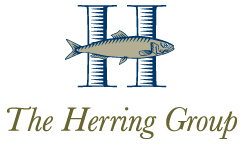This article originally appeared on LandscapeManagement.net on January 31, 2023 as a part of The Herring Group Benchmark Report recap series. Greg Herring regularly writes for Landscape Management, providing financial analysis and insights tailored to landscape business owners.
I’m a self-proclaimed numbers nerd, so it’s not surprising that one of the most gratifying projects I do each year is The Herring Group Landscape Industry Benchmark Report.
What story does this year’s report tell? Most companies can be a lot more profitable than they are.
Before we get into just how much more profitable landscape companies could be, here’s some background on our Benchmark Report, sponsored by Aspire, John Deere and Inova. This year, 151 companies participated, with revenue between $1 million and $120 million. To produce the report, we get income statements from all participants and format them to make them comparable. Then we analyze the data to generate useful insights for the participants.
Key Results
At The Herring Group, we use operating profit margin to measure profitability. Operating profit equals revenue minus direct job expenses, indirect job expenses and overhead expenses (including straight-line depreciation expense). Operating profit margin is operating profit divided by revenue.
This indicator measures customer satisfaction, the effectiveness of management and employees and efficiency. I encourage companies to plan for an operating profit margin of 12 percent and settle for anything above 10 percent as an initial goal.
Our 2022 report shows a weighted average operating profit margin of 5 percent. Companies with an operating profit margin above 10 percent averaged 12.8 percent, and companies with an operating profit margin below 10 percent averaged just under 3 percent.
That’s a big gap. One out of every four companies had an operating profit margin greater than 10 percent.
Observations on the Findings
When analyzing the participants who hit 10 percent, I noticed the following:
- Companies of every size and in every region hit the goal;
- Companies with and without snow hit the goal; and
- Companies that grew fast and those that grew slow hit the goal.
Notably, 1/4 of the participants improved their operating profit margin by more than 5 points.
Reaching a 10 percent operating profit margin requires the right plan and the right mindset.
A solid plan means the right people have the right data at the right time. Your team members must know if they are winning or losing.
The right mindset avoids “whataboutism,” or the tendency to make excuses or seek explanations for poor performance. It says, “We can do better. We can win. We are going to think and work differently, and we are going to hold each other accountable for results. Sure, we will make mistakes, but we will learn from them.”

Understanding your Opportunity
So how much more profitable could your company be? See the chart below to understand your opportunity.
First, find your current operating profit margin on the left side of the chart. Next, find your revenue at the top of the chart. That figure is your opportunity. This number is the additional pre-tax cash flow available when you reach the goal of a 10 percent operating profit margin.
Consider what the opportunity would mean for your company, your employees and you. A larger investment in technology? Higher 401(k) contributions? A bigger cushion in the event of an economic jolt?
As you contemplate the start of a new season, now is the time to develop your plan, adjust your mindset and seek commitment from your team to reach the goal in 2023.
To be notified when registration opens for next year’s Industry Benchmark Report, visit Herring-Group.com/Benchmark.

